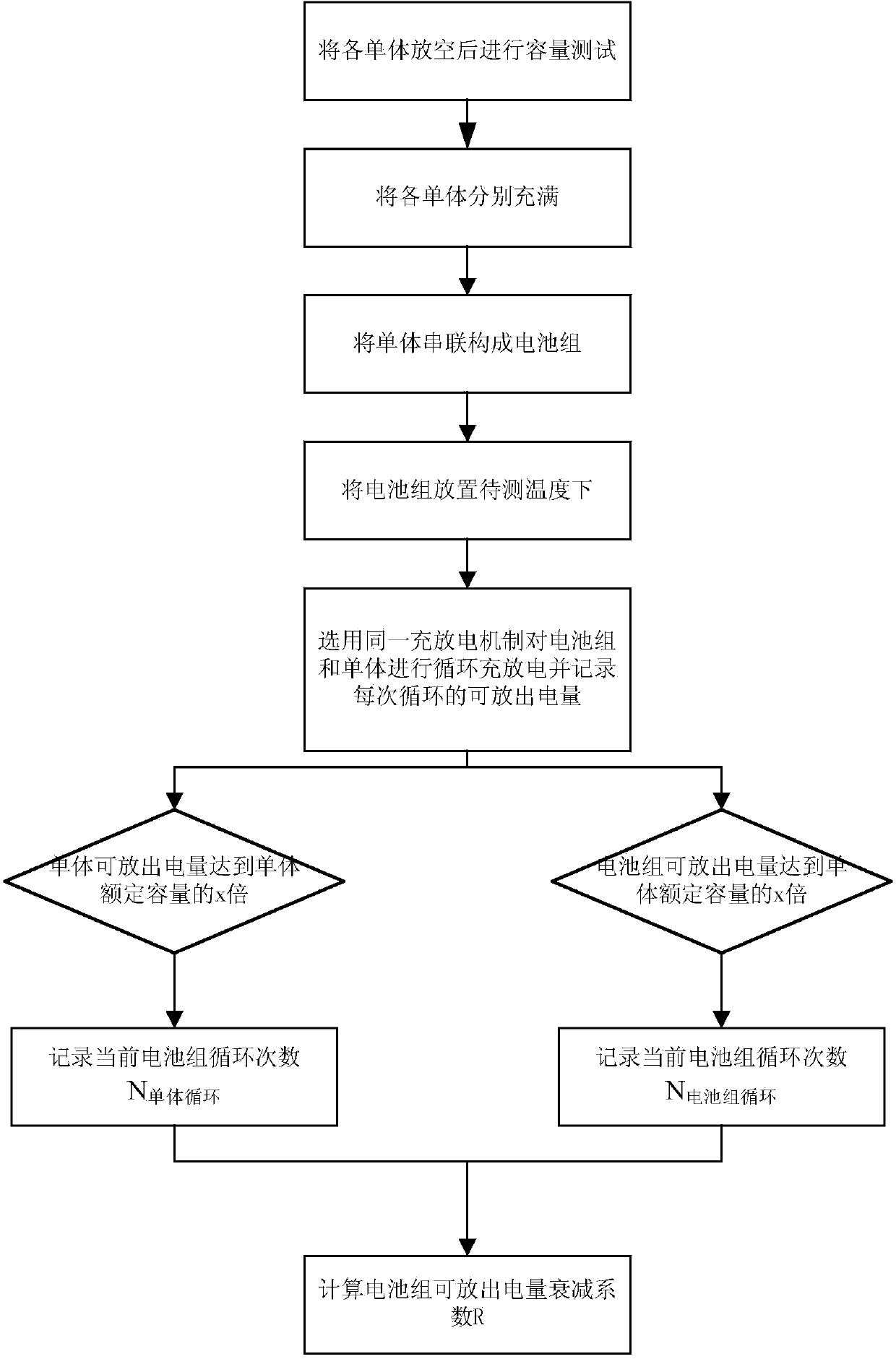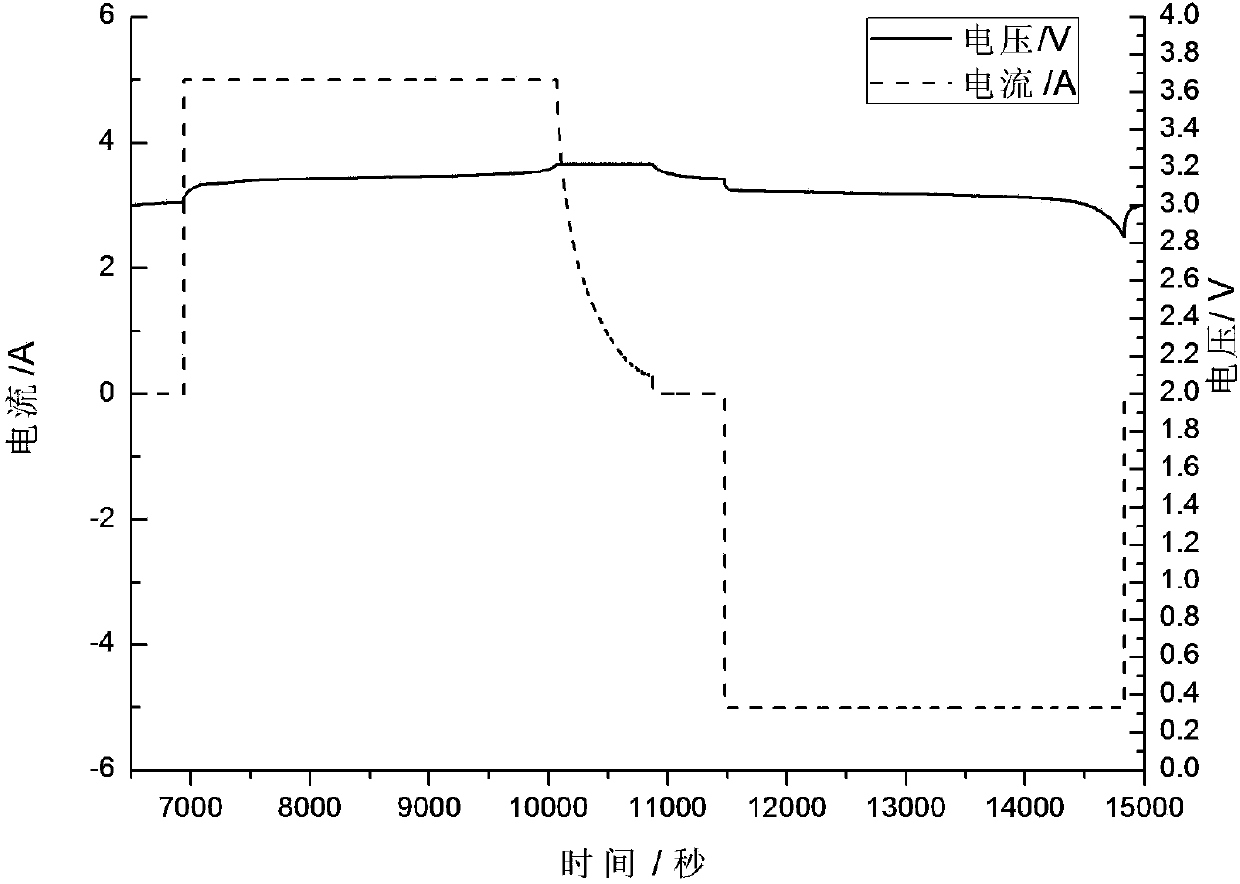Attenuation coefficient-based method for evaluating dischargeable electric quantity of series battery pack
A technology of connecting battery packs and attenuation coefficients, applied in the direction of measuring electrical variables, measuring electricity, measuring devices, etc., can solve the problems of the lack of dischargeable power of the battery pack and the inability to compare and evaluate test standards, so as to reduce energy consumption and shorten the effect of time
- Summary
- Abstract
- Description
- Claims
- Application Information
AI Technical Summary
Problems solved by technology
Method used
Image
Examples
specific Embodiment approach 1
[0027] Specific implementation mode 1. Combination Figure 1-Figure 4 To illustrate this embodiment, the implementation process of a method for evaluating the attenuation of dischargeable power of a series battery pack based on the attenuation coefficient described in this embodiment is as follows:
[0028] Step 1: Select the battery cell that needs to be tested, and measure the capacity of the battery cell at room temperature; discharge the cell with a constant current of 1C to the lower limit cut-off voltage; Charge by constant current charging first and then constant voltage charging to reach full state;
[0029] Step 2: Use the same type and the same batch of battery cells in series to form a battery pack;
[0030] Step 3: Select a certain temperature point within the normal working temperature range specified in the battery manual as the temperature point to be tested, and the following steps are all carried out at this temperature point to be tested;
[0031] Step 4: U...
specific Embodiment approach 2
[0035] Specific Embodiment 2. In step 1 of this embodiment, the specific process of measuring the capacity of the battery cell is as follows: first, select the constant current 1C charging mentioned in the FreedomCar test standard to charge the battery with a constant current, and when it reaches the upper limit specified in the battery manual Keep the upper limit cut-off voltage unchanged at the cut-off voltage for constant voltage charging, stop charging when the current drops to 0.05C, and let it stand for 1 hour; then discharge with a constant current of 1C, stop discharging when it reaches the lower limit cut-off voltage, and discharge during the discharge process The power is the capacity of a single battery. Other steps are the same as in the first embodiment.
specific Embodiment approach 3
[0036]Specific embodiment three. In step three of this embodiment, the temperature to be measured is -30°C, -20°C, -10°C, 0°C, 10°C, 20°C, 30°C, 40°C, 50°C or 60°C ℃. Other steps are the same as those in Embodiment 1 or 2.
PUM
 Login to View More
Login to View More Abstract
Description
Claims
Application Information
 Login to View More
Login to View More - R&D
- Intellectual Property
- Life Sciences
- Materials
- Tech Scout
- Unparalleled Data Quality
- Higher Quality Content
- 60% Fewer Hallucinations
Browse by: Latest US Patents, China's latest patents, Technical Efficacy Thesaurus, Application Domain, Technology Topic, Popular Technical Reports.
© 2025 PatSnap. All rights reserved.Legal|Privacy policy|Modern Slavery Act Transparency Statement|Sitemap|About US| Contact US: help@patsnap.com



